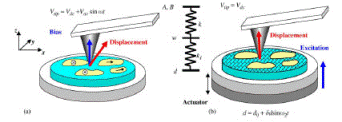Department of Physics and Astronomy: Publications and Other Research
ORCID IDs
C. J. McCluskey https://orcid.org/0000-0001-8857-5105
A. Kumar https://orcid.org/0000-0003-0492-2750
A. Gruverman https://orcid.org/0000-0003-0492-2750
I. Luk’yanchuk https://orcid.org/0000-0001-8622-3552
J. M. Gregg https://orcid.org/0000-0002-6451-7768
Date of this Version
5-2-2023
Citation
Appl. Phys. Lett. 122, 222902 (2023); doi: 10.1063/5.0152518
Abstract
Ferroelectric domain walls, across which there is a divergence in polarization, usually have enhanced electrical conductivity relative to bulk. However, in lead germanate, head-to-head and tail-to-tail walls are electrically insulating. Recent studies have shown that this is because, when oppositely oriented domains meet, polar divergence is obviated by a combination of domain bifurcation and suspected local dipolar rotation. To explore the uniqueness, or otherwise, of this microstructure, we have used tomographic piezoresponse force microscopy to map three-dimensional domain morphologies in another uniaxial ferroelectric system: triglycine sulfate. This mapping reveals an abundance of domain wall saddle points, which are characteristic of interlocking bifurcated domains. Conducting atomic force microscopy, performed close to the saddle points, showed no evidence for highly localized conducting domain wall sections, across which a divergence in polarization might be implied; this supports the notion that localized dipolar rotation occurs to minimize any potential polar discontinuity. Overall, our study, therefore, confirms that mutual domain bifurcation and suspected local dipolar rotation are not unique to lead germanate and instead may be widely present in other uniaxial ferroelectrics.
Included in
Atomic, Molecular and Optical Physics Commons, Condensed Matter Physics Commons, Engineering Physics Commons, Other Physics Commons



Comments
Published under an exclusive license by AIP Publishing. Used by permission.